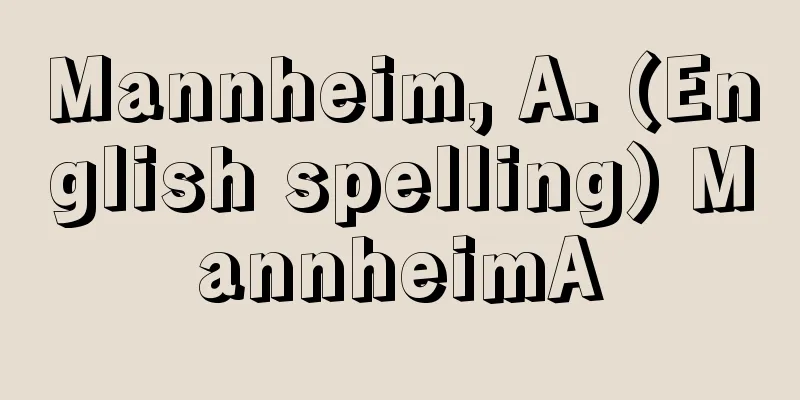Synesthesia - synesthesia

|
Synesthesia is a phenomenon in which a certain sensory stimulus causes another sensation. For example, when we hear a sound or see a letter, we sense a color, and this can only be experienced by a very small percentage of people. It is known that there are various types of synesthesia, but nearly 70% of synesthetes are grapho-color synesthetes. Grapho-color synesthetes can sense a synesthetic color for colorless letters. Synesthetes rarely have the same synesthetic color, but there has been active research into the factors that determine synesthesia. It is also believed that the correspondence between each letter and synesthetic color remains constant throughout a person's life, and this robustness differs from the results of temporary associative learning between letters and colors by non-synesthetes. Synesthetes' explanations of color tone, color shade, texture, etc. are often very precise. Medically, the existence of synesthesia has been reported since the early 18th century, but controlled research into synesthesia has only recently begun, and has made remarkable progress since the 2000s. As a result, for example, the proportion of synesthetes was said to be 1 in 100,000 in the 1990s, but it is now thought to be around 1%. In the past, synesthesia was often considered a genius ability similar to savant syndrome, but it is now thought to be different from so-called genius abilities. Many researchers have also raised doubts about the claim that many artists were synesthetes. We all have connections between sensory attributes that can cause synesthesia, but for example, non-synesthetes have a good balance of excitatory and inhibitory connections between attributes and do not cross-activate, whereas synesthetes have a bias in the balance of excitatory and inhibitory connections between attributes and cross-activate. Synesthesia has a genetic factor, and it is highly likely that a first-degree relative of a synesthete is a synesthete. Even in the visual information processing of non-synesthetes, there is a possibility that it interacts with various sensory attributes, i.e., synesthetic cognition. For example, the Bouba/Kiki effect was reported by Gestalt psychologist W. Köhler in 1929, and was recently revisited by VS Ramachandran et al. When people are asked to choose whether a rounded figure surrounded by smooth curves and a sharply pointed figure surrounded by straight lines is named bouba or kiki, 98% of people, regardless of their mother tongue or age, answer that the rounded figure is bouba and the pointed figure is kiki. This is synesthetic cognition of linguistic sounds and visual shapes. In other words, when we name everyday objects, it may be unconsciously based on synesthetic cognition. From such phenomena, synesthesia is by no means a unique phenomenon, and we should not view it in a dichotomous way as synesthetes and non-synesthetes. It would be more appropriate to think that synesthetic tendencies are distributed continuously. → Sensation [Kazhiko Yokozawa] Latest Sources Psychology Encyclopedia Latest Psychology Encyclopedia About Information |
|
共感覚とは,ある感覚刺激によって,ほかの感覚を得る現象である。たとえば,音を聞いたり文字を見たりすると,色を感じる現象であり,ごく一部の人だけが経験できる。さまざまなタイプの共感覚が存在することが知られているが,共感覚者の7割近くは色字共感覚者である。色字共感覚者は,色のない文字に対して,共感覚色を感じることができる。共感覚者間で共感覚色が一致することはめったにないが,共感覚色を規定する要因を明らかにしようとする研究が盛んに行なわれている。また,各文字と共感覚色の対応は一生変わらないと考えられており,このような頑健性は非共感覚者による文字と色との一時的な連想学習の結果とは異なる。また,色調や色の濃淡,材質感などに関する共感覚者の説明は,きわめて厳密である場合が多い。医学的には,18世紀の初頭から共感覚の存在が報告されているが,統制された共感覚研究に取り組み始めたのは比較的最近であり,2000年代になってから著しい発展を遂げている。その結果,たとえば共感覚者の割合は,1990年代には10万人に1人といわれていたが,最近では1%程度存在すると考えられている。以前は共感覚をサバン症候群と同様の天才的能力ととらえがちであったが,現在は共感覚がいわゆる天才的能力とは異なると考えられている。多くの芸術家が共感覚者だったという主張にも,疑問を提起する研究者が少なくない。われわれはだれでも共感覚を引き起こす可能性を有する感覚属性間の結合関係をもっているが,たとえば非共感覚者は属性間の興奮性結合と抑制性結合のバランスがうまくとれているので交差活性化しないが,共感覚者は属性間の興奮性結合と抑制性結合のバランスに偏りがあり,交差活性化するのではないかと考えられる。共感覚には遺伝的要因があり,共感覚者の一等親血縁者が共感覚者である可能性が高い。 非共感覚者の視覚情報処理においてもさまざまな感覚属性と相互作用する可能性,すなわち共感覚的な認知が存在する。たとえば,ブーバ/キキ効果Bouba/Kiki effectは1929年にゲシュタルト心理学者のケーラーKöhler,W.が報告し,最近になってラマチャンドランRamachandran,V.S.らが再び取り上げた現象である。丸みを帯びた滑らかな曲線で囲まれた図形と,直線で囲まれ鋭く尖った図形の二つについて,その名前はブーバとキキのどちらであるかを選択してもらうと,母語や年齢の違いに関係なく,98%の人たちが丸みを帯びた図形をブーバ,尖った図形をキキだと答える。これは,言語音と視覚的形状の共感覚的な認知である。すなわち,われわれが日常物体など何に対して命名するときにも,無意識のうちに共感覚的な認知に基づいている可能性がある。このような現象から,共感覚という現象は決して特殊ではなく,共感覚者と非共感覚者という二分法的な見方をすべきでもなく,共感覚的性向が連続的に分布していると考えた方が妥当であろう。 →感覚 〔横澤 一彦〕 出典 最新 心理学事典最新 心理学事典について 情報 |
<<: Kang Kam‐ch'an (English spelling)
Recommend
Shoeworm
A general term for arthropods belonging to the ord...
Wen Chang Shen (English spelling)
In old China, Wenchang was the god of learning and...
Onychiurus
…They become adults after molting about 5 to 7 ti...
Ooichimonji (English spelling) Popular Admiral
This butterfly belongs to the order Lepidoptera, ...
Crassula
...Used for potted plants or flower beds. [Crassu...
Salt water selection - Ensuisen
This is one of the gravity selection methods to s...
Klič, K.
In 1879, the Czech Karl Klič (1841-1926) develope...
Fugu (blowfish) (English spelling) Po‐u
1301‐82 A Korean monk from the end of the Goryeo D...
Sea level correction
The conversion of atmospheric pressure at a certa...
Hermanus Johannes Aloysius Maria Schaepman
1844‐1903 Dutch clergyman, politician, and man of ...
Asclepius
…The ancient Hermetic texts were apparently enorm...
Andon jellyfish - Andon jellyfish
This jellyfish belongs to the phylum Coelenterata...
Togawa-shi - Sogo Uji
One of the samurai families of the Middle Ages. A ...
Edmond Rostand
French poet and playwright. Born into an educated...
Opening the Book - Opening the Book
〘 noun 〙 A ceremony to offer a memorial service fo...






![Kamo [city] - Kamo](/upload/images/67cb4035c33db.webp)


